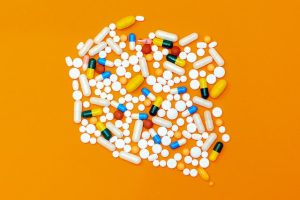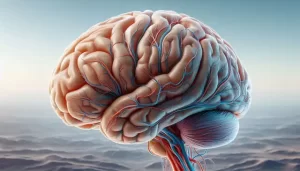Enhance the anti-tumor function of CAR-T cells by advanced media design
- A Persistent Crisis: The Looming Specter of Drug Shortages in United States
- Rabies: The fatality rate nearly 100% once symptoms appear
- Human Brain Continues to Grow: Study Shows Increase in Size and Complexity
- CRISPR Genome Editing: From Molecular Principles to Therapeutic Applications
- Metformin Helps Immune System Better Recognize Cancer Cells
- Highlights of Prostate Cancer Research at the 2024 EAU Congress
Enhance the anti-tumor function of CAR-T cells by advanced media design
Enhance the anti-tumor function of CAR-T cells by advanced media design. The T cell culture medium is conditioned with serum from animal or human sources. Serum provides an important source of bioactive peptides, hormones and growth factors that together support cell growth.
When designing optimized media for T cell therapy, it is important to understand how serum components affect transduction, proliferation, and differentiation. Animal-derived serum such as fetal bovine serum (FBS), as an example of its rich source of nutrients, is widely used in research applications and preclinical discoveries [3].
However, the use of FBS for in vitro cell culture cannot simulate the human microenvironment. This limits the transformational application of FBS and emphasizes the need for effective substitutes. FBS is also not suitable for cell-based therapy because it has the risk of spreading bovine spongiform encephalopathy and viral pathogens.
As a conditioning agent for human cells grown in vitro in a highly controlled environment, human serum (HS) has inherent advantages over cattle. HS provides additional stimulation for cell proliferation and survival without any heterogeneous components. In addition, its limited supply and batch variability will eventually hinder the progress of CAR-T cell-based therapies.
We describe a new system for transducing and stimulating CAR-T cells using a serum-free method. We show that concentrated growth factor extracts purified from human transfusion-grade whole blood fractions can effectively replace serum in CAR-T cell cultures.
We found that CAR-T cell transduction was significantly enhanced relative to HS in the medium conditioned with concentrated growth factor extracts. Anti-GD2 CAR-T cells expanded in medium supplemented with Phx demonstrated increased cytotoxicity in vitro. This helps to improve the therapeutic efficacy of neuroblastoma xenograft models.
We provide evidence that CAR-T cells expanded in Phx also have excellent implantation and survival rates after transplantation in vivo. Since in vitro culture forms the basis of many adoptive immunotherapies, the development of customized serum-free preparations, regardless of whether they contain chemically determined derivatives to protect cell biological activity and function, will lead to the rapid development of CAR-T therapy .
Test Resulsts
Several strategies have been developed to increase the effectiveness of CAR-T cells against cancer. Modifying CAR design, limiting differentiation, and simplifying the manufacturing process have all increased the clinical impact of CAR-T cells.
Optimizing the media formulation to support the expansion of enhanced potency CAR-T cells is a simple and untested method. In this study, we hypothesized that the unique composition of paracrine, systemic, and metabolic factors in concentrated growth factor extracts purified from transfusion-grade blood components would enhance the effectiveness of CAR-T cells.
Activated T cells form large primitive cells in preparation for cell division. In this explosive phase, T cells synthesize and accumulate macromolecular components for their daughter cells. To test the effect of Phx on T cell activation and proliferation, we used anti-CD3/CD28 Dynabeads to activate T cells in a medium containing a standard concentration of 5% HS or 2% Phx. We selected a growth factor extract with a final concentration of 2% based on the previously described use in mesenchymal stem cells and CD4+ T cells [18].
As shown in Figure 1A, the average cell volume is representative of activation, in a medium containing a standard concentration of 5% HS or 2% Phx. The cell size at 5 days after activation was similar in all groups; measured 705±23 fL (OpT+HS), 719±34 fL (OpT+Phx), 711±26 fL (X-VIVO+HS) and 695±19fL ( X-VIVO+Phx). Compared to Phx, the original cell size of cells cultured in RPMI+FBS increased slightly (631±21fL vs. 518±4.9fL). This explosion phase is related to the subsequent proliferation burst after T cell activation.

Figure 1. Concentrated blood cell extract Physiologix supports the expansion of primary human T cells in clinical and research-grade media (A) Stimulate a mixed T cell population with anti-CD3/CD28 Dynabeads and contain 5% human serum or 2% Amplify in Physiologix medium. Measure the average cell volume every other day from day 3 until the number of cells in the culture stops increasing and the average cell volume is less than 350 fL. Representative data from 3 independent experiments are shown. (B) Stimulate T cells as in (A). Begin cell counts every other day from day 3 until the number of cells in the culture stops increasing and the average cell volume is less than 350 fL.
After direct or alternative antigen stimulation, activated T cells enter the logarithmic phase of expansion. In this proliferation stage, T cells proliferate to increase their numbers before adoptive cell transfer. We rigorously tested the effect of Phx on T cell proliferation and survival. We found that when the clinical grade medium OpTmizer or X-Vivo-15 medium was formulated with 2% Phx or 5% HS, primary human T cells showed similar proliferation ability (Figure 1B). In OpTmizer medium supplemented with 2% Phx, the average number of population doublings per cell in 9-11 days is 5.8±0.8.
T cells expanded in OpTmizer+5% HS showed an average population doubling of 5.7±0.5. Similar findings were obtained in X-Vivo-15 medium supplemented with 2% Phx or 5% HS (5.3±0.6 and 5.3±0.7, respectively). The same trend was observed in CD4+ and CD8+ T cell subpopulations. When 2% Phx (maximum population doubling 4.7 ± 0.3) is used in RPMI medium instead of 10% FBS (maximum population doubling 8.2 ± 1.1), T cell proliferation will be moderately reduced. Although the duration of growth in the log phase is not affected, overall proliferation will decrease (Figure 1C). This effect was mitigated by increasing the total protein content of the medium containing HS albumin (data not shown).
Since the CD4/CD8 ratio is an important aspect of T cell phenotype, we evaluated the ex vivo expansion of a mixed population of CD4+ and CD8+ T peripheral blood T cells. To examine whether proliferation is differentially regulated in the CD4 or CD8 compartment, we used bead-based flow cytometry to assess the surface phenotype of the cells before, during, and at the end of the log phase. Table S1 shows that the ratio of CD4 to CD8 T cells is comparable between stimulation conditions. Cell culture models also provide information about the state of differentiation. We show that T cells expanded in medium supplemented with FBS, HS, or Phx have similar levels of central memory and effect memory surface markers at the end of the in vitro culture process (Figure 2A-2D).

Figure 2. The differentiation of T cells expanded in medium conditioned with Phx and human serum is similar. Anti-CD3/CD28 stimulated T cells expand in various media conditioned with 5% human serum or 2% Physiologix Add a few days. (A) When the cells exit the proliferation phase, the surface expression of CCR7 and CD45RO is measured by flow cytometry. A representative graph is shown (n = 3). The cells are pre-gated for live CD8+ T cells. (B) The relative proportions of naive (CCR7+; CD45RO-), central memory T cells (Tcm) (CCR7+; CD45RO+) and effector memory T cells (Tem) (CCR7-; CD45RO) subsets (after the gate is set, CD8+ T cells).
In CAR-based therapies, T cells are genetically modified by controlling antigen-specific receptors. Lentiviral vectors are commonly used as vectors to deliver CAR genes to activated T cells. In terms of mechanism, the lentivirus enters the cell and penetrates the cytoplasm through endocytosis. Exogenous growth factors and cytokines are very different in Phx and HS (Figure S1), which can promote vesicle transport, mainly through the recruitment and activation of the Rab family of small GTPases [19]. Obtaining metabolites can support the conversion of retroviral genetic material into cDNA.
To evaluate the effect of Phx on lentiviral gene transfer, we infected activated T cells with a lentiviral vector encoding EGFP and measured transduction after 72 hours. When the MOI was 0.5, when the OpTmizer medium was adjusted with Phx instead of HS, the number of GFP-positive cells increased significantly (2%±0% and 6%±0.6%, p<0.05) (Figure 3). Similar results were found at higher MOIs (Figure 3). These findings provide evidence that medium supplemented with Phx improves transduction efficiency.

Figure 3. Phx enhances lentivirus-mediated gene expression, activated a mixed T cell population with anti-CD3/CD28 Dynabeads, and cultured in OpTmizer medium adjusted with 5% human serum or 2% Physiologix. After overnight stimulation, the previously titrated GFP lentiviral supernatant was added at various dilutions. After 3 days, the efficiency of lentivirus infection was measured by flow cytometry.
In order to evaluate the functional consequences of Phx-based CAR-T cell manufacturing, we next evaluated the anti-tumor function of CAR-T cells expanded in Phx in a neuroblastoma xenograft model. The schematic diagram of the xenograft model is shown in Figure 4A. In view of our early work in this field, we chose E101K, the anti-GD2 CAR designed a 4-1BB costimulatory domain for this study [20]. Anti-GD-2 CAR-T cells were expanded in a medium containing 2% Phx and 5% HS for 9 days (Figure S2). Consistent with our previous findings using EGFP lentivirus, GD2 CAR expression level increased from 60% in HS to 73%.
Transplant SY5Y cells expressing Click BeetleGreen Luciferase into immunodeficient mice. After 5 days, the tumor cell implantation was confirmed by bioluminescence. As shown in Figure 5A, the initial tumor burden was the same for all experimental groups. We used intravenous (i.v.) infusion of 3×106 or 0.75×106 CAR-T cells and regularly measured the corresponding tumor size by bioluminescence, and compared the efficacy of CAR-T cells expanded in HS and Phx. As expected, untreated SY5Y xenografts increased exponentially over time, and control T cells expressing irrelevant CAR had little effect on tumor cell growth (Figure 4B). As expected, the high-dose (3×106 cells) CAR-T cells expanded in vitro in HS significantly reduced tumor burden.
However, GD-2 specific CAR-T cells expanded ex vivo in Phx showed significantly superior tumor control (Figure 4C). In order to further evaluate the efficacy of this model, we reduced the infusion dose of CAR-T. “Stress test”. T cells are 0.75×106 cells. The use of this “stress test” model is increasingly recognized as an important experimental parameter that can provide insight into the effectiveness of CAR-T cells [13,21]. Compared with Phx CAR-T, lower dose of HS CAR-T resulted in incomplete tumor control (Figure 4D). These findings prove that Phx enhances the anti-tumor efficacy of CAR-T in a xenograft model (Figure 4E).

Figure 4. Study on the anti-tumor function of anti-GD2 CAR-T cells expanded in Phx-conditioned medium in vivo (A) Xenograft model in NSGs and anti-GD2 CAR-T cell therapy (from healthy donors) Schematic diagram. Inject 0.5×106 SY5Y cells. Activated T cells were infected with anti-GD2 CAR lentivirus and were treated with H.S. or Phx for more than 9 days. Choose high (3×106) or low (0.75×106) doses of CAR+T cells to examine the effects of Phx and HS on the efficacy of CAR-T cells. These cells are injected intravenously. It was injected into NSG mice 5 days after SY5Y injection (n=6-8 per group). (B-H) Serial quantification of disease burden through luminescence imaging. (B) Tumor size of mice that did not receive T cells or T cells expressing irrelevant CAR, which was designed to recognize human EGFR. Each symbol represents a mouse. (C) Effectiveness of 3×106 anti-GD2 CAR-T cells expanded in Phx and anti-GD2 CAR-T cells expanded in HS. (D) Effectiveness of 0.75×106 CAR-T cells expanded in Phx and anti-GD2 CAR-T cells expanded in HS. (E) In mice treated with anti-GD2 CAR-T cells, tumor burden was quantified by bioluminescence imaging on day 10 (3×106) and day 14 (0.75×106). Values represent the mean ± SEM of each group. (F) Blood was collected by retroorbital hemorrhage 14 days after tumor injection, and absolute peripheral blood CD45+ T cells were calculated by TruCount analysis.

Figure 5. Metabonomics evaluation of OpTmizer medium adjusted with human serum and Phx (A) The heat map illustrates the hierarchical relationship between metabolites present in various mediums conditioned on human serum or Phx. In this grid, each row represents a unique metabolite, and each column corresponds to a unique medium formula. (B) The abundance of metabolites in Phx is normalized to HS. The levels of metabolites present in the two media were normalized to the HS level. Then, the metabolites are rearranged on the x-axis by the highest to lowest difference between the metabolite levels from the two supplementation methods. The dotted line represents the level present in HS, while the solid line represents Phx.
At the end of the experiment, we collected peripheral blood samples from mice treated with HS CARTS and Phx CAR-Ts. Under HS conditions, the circulating number of T cells is almost undetectable (Figure 4F). These findings are consistent with previous studies using this model. 20 The number of T cells treated with circulating Phx increased significantly; one effect may be explained by excellent in vivo replication ability and survival rate. The persistence of CAR-T cells after adoptive transfer helps to enhance tumor control, emphasizing the functional properties of Phx relative to HS.
The enhanced effector function may also contribute to the observed increase in tumor regression after Phx regulation. To determine the role of Phx in the effector function of CAR-T cells, we compared the killing ability of Phx and HS CART in a luciferase-based in vitro cytotoxicity assay. After co-cultivation with SY5Y target cells expressing GD-2, Phx CAR-induced cytolytic activity was significantly enhanced in a wide range of effector: target (E:T) ratios relative to HS CAR-T cells (Figure S3).
Given the new interest in understanding how metabolites affect T cell differentiation and effector function, 22 we compared the metabolite content of Phx and HS. Using non-targeted metabolomics methods, we screened Phx and HS to reveal Phx-specific factors that may cause differences in gene transduction and overall efficacy. We found that the Phx of several monosaccharide derivatives, including glucosamine-6-phosphate, D-sedoheptulose-1/7 diphosphate, and glucose-1 phosphate, increased by several orders of magnitude relative to HS (Figures 5A and 5B). Phospholipids and nucleotide derivatives in Phx are also increased relative to HS, including O-phosphoethanolamine and hypoxanthine, xanthine and uracil. Factors with recognized roles in the central metabolic pathway, including pyruvate and taurine, are more abundant in Phx.
Our metabolomics screening identified a dipeptide containing β-alanine and L-histidine, commonly called carnosine, with a Phx that is 166% higher than HS (Figures 5A and 5B). To determine whether carnosine enhances the expression of lentiviral genes in activated T cells, we supplemented HS-based media with different concentrations of carnosine (3.75-30 mM). These concentrations are similar in magnitude to other studies. 23,24 GFP lentiviral supernatant was added to carnosine-treated T cells at a MOI of 0.5. We observed a dose-dependent increase in gene transduction up to 30 mM; at this concentration, carnosine effectively increased the number of GFP-expressing T cells from 31% to 43% (p=0.05; Figure 6A). Interestingly, this effect is more in the CD4+ T cell compartment. Our data use this histidine dipeptide as an important factor in enhancing lentivirus-mediated CAR transduction in activated T cells.

Figure 6. Carnosine enhances the expression of GFP+ lentivirus and improves the metabolic properties of T cells (A and B) Freshly isolated T cells are activated in cell culture media containing human serum supplemented with different levels of carnosine. As a positive control, activate T cells in a cell culture medium containing 2% Phx. After 24 hours, the T cells were infected with GFP lentivirus. Shows the proportion of live, GFP+, and T cells in the CD4+ (A) and CD8+ (B) compartments. As described in Materials and Methods, bead-based flow cytometry was used to count T cell subpopulations. The value is expressed as a percentage of OpT+HS. The mean ± SEM of 3 independent experiments from different donors is shown. (C) T cells are activated with Dynabeads. After overnight stimulation, the cells were switched to bicarbonate-free XF assay medium containing 30 mM carnosine. The metabolic parameters are measured by the extracellular flux assay.
The strategy of limiting glycolytic metabolism during in vitro culture has resulted in T cells with enhanced anti-tumor function. 25, 26, 27 A basic premise of these studies is glycolysis, which produces effector-differentiated T cells through a poorly understood mechanism; implantation and a less persistent subset after adoptive transfer. Glycolysis ultimately produces lactic acid (H+La−), which is broken down into an oxidizable fuel source, lactic acid and corresponding protons. Both La- and H+ are exported outside the cell. The adverse effects of glycolysis-induced acidification on T cell function and quality (with intracellular and extracellular consequences) are unclear.
To test the ability of carnosine to neutralize extracellular acidification, we performed an extracellular flux (hippocampal) assay. After stimulation with Dynabeads overnight, the T cells were switched to Seahorse assay medium containing HEPES supplemented with 30 mM carnosine. Adjust the pH of the medium to pH 7.4 before use. As shown in Figure 6C, carnosine effectively buffers the accumulation of extracellular protons; significantly reduces steady-state extracellular acidification from 23 to 9 mph/min (p <0.05).
Carnosine also transforms the metabolic characteristics of activated T cells from a glycolytic state to an oxidized state (Figure 6D). In the cell culture process, the oxidative metabolism characteristics are better than the glycolytic metabolism state, because it eventually forms the T cell progeny with excellent anti-tumor function. 25, 26, 27 In order to distinguish the intracellular and extracellular benefits of carnosine, we added Gly-Sar to competitively inhibit carnosine uptake through the cell surface transporter PEPT1. Gly-Sar enhances the ability of carnosine to limit extracellular acidification and enhances the effect of carnosine on the overall metabolic phenotype (Figure 6D).
Together, these findings highlight the therapeutic potential of Phx as the preferred alternative to HS; producing enhanced CAR gene delivery and efficacy in cancer xenograft models. Our research results also emphasize the therapeutic value of identifying and containing biogenic amines (such as carnosine). Compared with HS, carnosine is moderately enriched in Phx to improve the overall quality of the cell culture medium used for CAR-T cell therapy.
(source:internet, reference only)
Disclaimer of medicaltrend.org
Important Note: The information provided is for informational purposes only and should not be considered as medical advice.



